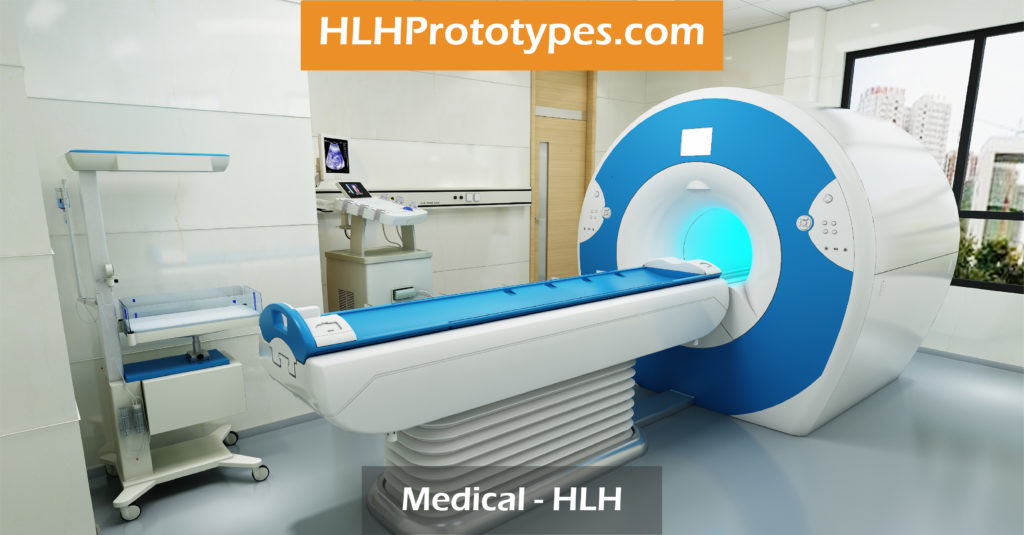Medical 3D Printing & Its Impact In The Medical Field

A “one size fits all” approach may be suitable for certain manufacturing processes, but it is not for the complexities of the human body. Given this, 3D printing technology has been transformative in the medical field, underscoring the importance of 3D printing in medicine.
Researchers, surgeons, and medical device developers are leveraging the capabilities of additive manufacturing to develop patient-specific solutions that enhance medical outcomes. Dr. Summer Decker and her team at USF Health and Tampa General Hospital provide such an example.
Utilizing advanced three-dimensional imaging, Dr. Decker’s team employs 3D printing to convert computer-generated models of a patient’s tumor into a precise anatomical model. This tangible prototype allows both the physician and the patient to comprehensively analyze the tumor. “Presenting this physical model to the physician facilitates a more informed surgical strategy, well in advance of the actual procedure,” Dr. Decker conveyed to CuriosityStream.
Such tangible models equip patients with a clearer understanding, promoting true informed consent. Dr. Decker notes that over 100 hospitals in the U.S. have incorporated 3D printing across their teams, collaborating closely with their radiologists and surgeons.
3D Printers for Implants, Prosthetics & Medical Devices
The use of 3D printing in the medical industry has seen a transformative shift. Researchers are not only harnessing 3D printers for medical devices and implants but are also paving the way for innovations beyond traditional manufacturing.
3D printing in the medical field can produce custom-sized screws essential for orthopedic treatments, restructure broken bones, or even create scaffolding implants designed to aid the regrowth of damaged ligaments.
Medical-grade 3D printers, equipped with the latest in bioprinting technology, utilize biocompatible materials. These materials either integrate seamlessly with human cells or are designed to be reabsorbed by the body over time, ensuring minimal invasive impact.
Utah State University’s Synthetic Biomanufacturing Institute stands as an exemplar in this medical sector, having undertaken extensive research on the utilization of biocompatible synthetic spider silk for 3D printing medical implants.
Thanks to these advancements in 3D printing, prosthetics are no longer confined to prebuilt molds with hefty price tags. Amputees can now benefit from customized, cost-effective prosthetic limbs crafted to ensure maximum comfort.
Charities like Not Impossible Labs are testament to the global reach of this technology, bringing accessible prosthetics to regions in dire need, such as war-torn countries. On a more personal note, Adam Dengel, a British father whose son was born without an arm, leveraged the power of a 3D printer to craft superhero-themed prosthetics for his young child, showcasing the profound impact of 3D models and the printed model.
Medical 3D Printing For Life Saving Applications
The year 2011 marked a significant milestone for 3D printing in the medical world. Baby Kaiba Gionfriddo, born prematurely with a fragile trachea, faced life-threatening challenges. Traditional medical imaging and medical equipment suggested a bleak future, with his throat’s tendency to collapse, rendering him breathless. His sole lifeline was a ventilator. However, the ingenuity of two professors at the University of Michigan changed the course of his fate.
Pediatric professor Glenn Green, M.D., and biomedical engineering professor Scott Hollister, Ph.D., engineered a splint using 3D printing. This splint, printed from a biocompatible material, was designed to bolster the strength of Kaiba’s trachea. Post the successful implantation around his trachea, Green shared with the New England Journal of Medicine the momentous shift in Kaiba’s health, emphasizing the pivotal role 3D printing has been used for.
In essence, 3D printing is reshaping the boundaries of what’s possible in the medical domain, with countless applications still waiting to be discovered. The narratives shared here are but a glimpse into a promising future sculpted by innovation and creativity.
Final Thoughts on 3d printing in Medicine
The evolution of 3D printing in medicine has undeniably ushered in a new era of patient care. The capability to develop 3D printed models has transformed how medical professionals approach complex cases. By merging 3D scanning with 3D bioprinting, intricate medical models can be produced, allowing for a more in-depth examination and understanding of patient-specific conditions.
3D printing also introduces a streamlined 3D printing process, enabling on-demand creation of tools and devices, from forceps to more sophisticated 3D-printed medical equipment. This technology also facilitates point-of-care solutions, where printing can also be tailored to meet immediate medical needs. For instance, if a hospital requires specific tools or prosthetics urgently, using 3D printers allows for swift, custom-made production.
Furthermore, the technique of crafting objects through successive layers ensures precision and intricacy, a crucial aspect when it comes to medical devices. When 3D printing is used in conjunction with biocompatible materials, it’s possible to produce implants or even tissue scaffolds imbued with living cells. This is evident in the realm of 3D bioprinting, where the potential applications are vast and still burgeoning.
3D printing to create patient-specific models allows for a more personalized approach to treatment. These models can be crucial in clinical trials, helping researchers and device manufacturers understand the real-world impact 3D printing can have on patient outcomes. Moreover, the ability to print devices on-the-go ensures that the medical field can respond more agilely to emergent situations.
In conclusion, 3D printing offers a revolutionary approach to medicine, bridging the gap between technology and patient care. The myriad of possibilities it presents, from detailed medical models to the production of life-saving equipment, underscores its transformative potential in the medical landscape.
By Esther Davies
